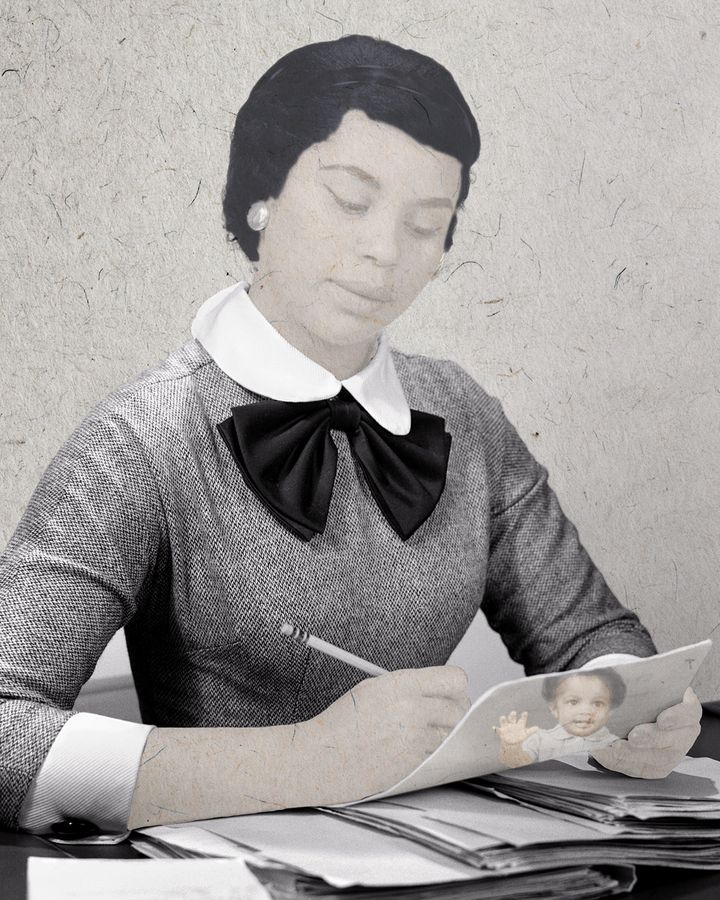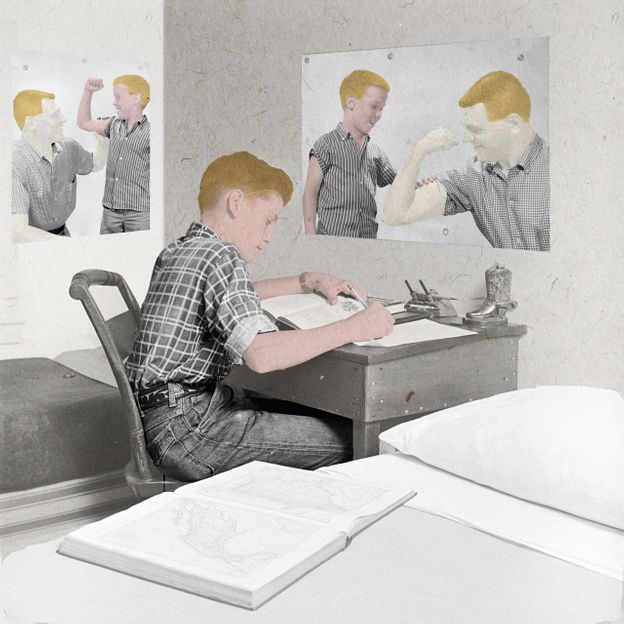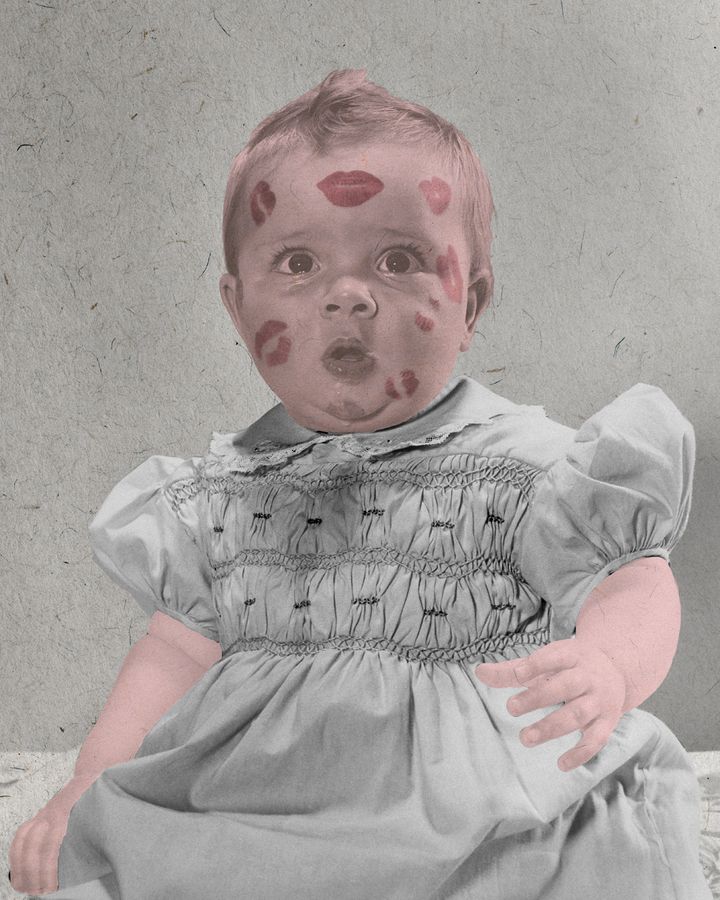Comments about our looks from our loved ones and friends can cause lifelong insecurities. How can we teach kids to feel confident about their bodies instead?
Picture the scene: a little girl tries on a sparkly dress, does a twirl and with great satisfaction, smooths it down. The adults around her echo her delight, and tell her how pretty she is. Later she looks at her favourite books, and sees slim people and slender animals going on exciting adventures, while their heavier counterparts are portrayed as slow or clumsy. Sometimes, she notices her own parents fretting about their weight or looks.
By the time she is a teen, her parents may worry how social media influencers are affecting her body image. But research suggests that in reality, her perception of bodies and their social acceptance will have been shaped long before then, in those very early years.
When we think about our relationship with our bodies, it’s often hard to pinpoint precisely where our satisfaction or dissatisfaction comes from. If we cast our minds back to our childhood, however, we may remember a collection of off-hand comments or observations. None of them may seem hugely impactful in themselves. And yet, their cumulative effect can be surprisingly potent.
The writer Glennon Doyle still recalls how her looks as a child earned her praise from the adults around her: “I could see it on their faces… They would light up, and so I learned, this is a currency,” she says on her podcast. But when she grew older and was considered less pretty, that adoration stopped – it was, she says, as if the world had turned away from her.
Whether it comes in the form of compliments or criticism, that kind of attention to body shapes can lay down beliefs and insecurities that are hard to shake off. The consequences can be tremendously damaging, as research shows, with family attitudes and derogatory comments about weight linked to mental health problems and eating disorders. In addition, the broader stigmatisation of overweight children has increased – affecting their self-esteem and of course, body image.
Given how early this awareness of body ideals begin, what can parents and caregivers do to help children feel confident about themselves – and more supportive of others?
From a young age, children are influenced by their parents’ views about physical appearance (Credit: Getty/Javier Hirschfeld)
FAMILY TREE
This article is part of Family Tree, a series that explore the issues and opportunities that families face all over the world. You might also be interested in other stories on childhood and development:
You can also climb new branches of the Family Tree on BBC Worklife and BBC Culture – and check out this playlist on changing families by BBC Reel.
Body shame is taught, not innate
Physical ideals hugely differ across time and different cultures – a quick look at any painting by Peter Paul Rubens, or indeed the 29,500-year-old figurine known as the “Venus of Willendorf”, shows just how exuberantly humans have embraced curvy features. But today, despite a growing body positivity movement that celebrates all shapes and sizes, the idea that a thin body is an ideal one remains dominant on social media, on traditional media, on television, on the big screen and in advertising.
Awareness of body ideals starts early, and reflects children’s experience of the world around them. In one study, children aged three to five were asked to choose a figure from a range of thin to large sizes, to represent a child with positive or negative characteristics. They were for example asked which children would be mean or kind, who would be teased by others and whom they would invite to the birthday. The children tended to choose the bigger figures to represent the negative characteristics.
Crucially, this bias was influenced by others: for example, their own mothers’ attitudes and beliefs about body shapes affected the outcome. Also, the older children displayed a stronger bias than the younger ones, which again indicates that it was learned, not innate. The findings “suggest children’s social environments are important in the development of negative and positive weight attitudes”, the researchers conclude.
“We see the patterns whereby children are attributing the positive characteristics to the thinner figures, and negative characteristics to the larger figures,” says Sian McLean, a psychology lecturer at La Trobe University in Melbourne, Australia, who specialises in body dissatisfaction. “They’re developing that quite early, which is a concern because they potentially have the chance to internalise that perception, that being larger is undesirable and being thinner is desirable and associated with social rewards.”
While parents play an important role in shaping their children’s attitudes and views, it should be emphasised that they are far from the only influence youngsters are exposed to, and can often have a positive effect that can counteract messages from other sources. But the research shows that parents’ views do matter.
Girls as young as five use dieting to control their weight
Another study showed that children as young as three were influenced by their parents’ attitude towards weight. Over time, the children’s negative associations with large bodies, and awareness of how to lose weight, increased. There is often a gender element to these perceptions, with sons more affected by their fathers’ views, and daughters by their mothers’ attitudes. The use of dieting to control weight has even been reported in girls as young as five. Here the main factors were exposure to media, as well as conversations about appearance.
The studies show just how early young children take on the societal perceptions of those around them, paying close attention to how adults behave and talk about bodies and food. That pattern continues, and can even worsen, as they grow older. Research assessing the level of body dissatisfaction and dieting awareness in children aged five to eight found that “the desire for thinness emerges in girls at around age six”. From that age, girls rated their ideal figure as significantly thinner than their current figure. Again, the children’s perception of their mothers’ body dissatisfaction predicted whether the girls then also felt dissatisfied with their own bodies. “A substantial proportion of young children have internalised societal beliefs concerning the ideal body shape and are well aware of dieting as a means for achieving this ideal,” the authors concluded. 
Thinking back, most of us will have experienced off-hand comments or observations during our childhood (Credit: Alamy/Javier Hirschfeld)
The danger of teasing
Many parents may feel shocked to hear that their own insecurities – which may after all be completely involuntary, and not something they wish to pass on – can have such an impact. But some family members also magnify this effect through derogatory comments.
In a study on the effects of teasing by family members on body dissatisfaction and eating disorders, 23% of participants reported appearance-related teasing by a parent, and 12% were teased by a parent about being heavy. More reported being teased by their fathers than their mothers. Such paternal teasing was a significant predictor of body dissatisfaction as well as bulimic behaviours and depression, and also increased the odds of being teased by a sibling. Maternal teasing was a significant predictor of depression. Being teased about one’s appearance by a sibling had a similarly negative impact on mental health and self-esteem, and raised the risk of eating disorders.
The authors suggested that understanding a family history of teasing would help health care providers identify those at risk for “body image and eating disturbance and poor psychological functioning”.
I still have a problem eating in front of my mom. She always criticised my eating and weight starting from when I was six. Maybe even before – 49-year-old study participant
Other research on children aged seven to eight has shown that mothers’ comments about weight and body size have been linked to a disordered eating behaviour among their children. Similarly, girls “whose mothers, fathers, and friends encouraged them to lose weight and be lean” were more likely to endorse negative beliefs about others’ weight, known as “fat stereotypes”. This is especially alarming given the rise in weight-related stigmatisation and bullying.
Even adult women can still feel the pain of weight stigma experienced in childhood, a study found, with the participants mainly pointing to their mothers as the source of such stigma. It was “the most hurtful thing I’ve ever experienced”, one participant said. The study quoted women in their 40s, 50s and 60s describing vivid memories of being weight-shamed by their families, and the profound sadness they still felt. “The constant criticism from my mother about my weight led to issues of self-confidence I have struggled with all my life,” one participant reported. “My father and brothers used to hum the ‘baby elephant walk’ tune when I was around eight–11 years old,” said another. “I still have a problem eating in front of my mom,” a 49-year-old participant stated. “She always criticised my eating and weight starting from when I was six. Maybe even before.”
One respondent recalled her mother putting her on a diet at the age of 10: “My feelings of my lack of attractiveness will probably never go away and have been with me all my life even when I was thinner. It is very painful.”
However, some respondents also said they felt their mothers projected their own insecurities, and perhaps intended the comments and advice to be helpful rather than mean.
Some adult women still feel the pain of weight stigma experienced in childhood (Credit: Getty Images/Javier Hirschfeld)
Beyond the family
There’s a reason why parental influence is so strong. Rachel Rodgers, a psychologist at Northeastern University, says that when a parent is concerned with their own body image, they will be modelling behaviours that show “this is important”.
“Even if they’re not mentioning the child’s physical appearance, they’re still acting in a way that suggests to the child, ‘this is something that worries me, this is something that I’m preoccupied with’, and so children pick up on that.”
In addition, many parents do tend to comment on what children are eating, wearing, or how they look, often in a well-meaning way, and that can increase the preoccupation with looks and weight. The resulting “thin idealisation” – a preference for thin bodies – sets children up to believe that their “social worth is contingent on their physical appearance and that’s going to lead them to invest in it in terms of their self-esteem, as well as their time and energy”, says Rodgers.
Of course, parents are not the only source of body stigma, especially as the child grows older. Their peers and the media tend to assume a greater role over time. Even toys such as dolls have an influence. One study featuring girls aged five to nine, found that when they played with an extremely thin doll, it changed their ideal body size to being thinner.
Unless they are countered, these influences can reinforce each other. Many studies show that media exposure contributes to appearance ideals – young girls who watched music videos were more focused on their appearance afterwards, for example. If friends then also talk about weight and appearance, that effect can be magnified.
“The way in which media ideals are supported and endorsed by their peers/friends was a more crucial factor than direct media exposure itself,” explains Jolien Trekels a psychologist studying body image at KU Leuven in Belgium, who led research looking into the role friends play on appearance ideals.
On a positive note, it may mean that young people are not just at the mercy of media ideals, but can collectively shape their own responses to it.
The danger of “thinspiration”
The type of social platform and activity also plays a role. One 2022 review found that Instagram and snapchat (both extremely visual) were more negatively linked to body image than Facebook, while taking and manipulating selfies was more damaging than actually posting them.
Unsurprisingly “thinspiration” content that promotes thinness and dieting, also showed negative effects (due to negative self-comparisons), as did fitness-promoting posts categorised as “fitspiration”.
Although viewing posts about exercise has been shown to increase adult exercise among women, it also internalises thin ideals, according to a 2019 study. This means that this early inspiring effect is not necessarily long lasting, as the study notes: “As time passes and women see no major effects of dieting and exercising, they may become frustrated which may consequently result in body dissatisfaction.”
A negative body image is problematic for many reasons. “Self-worth is often intertwined with one’s bodily self-perceptions,” explains Trekels.
This is especially the case for women and girls. Once a negative body image develops, it is a high predictor for eating disorders and depression. The statistics paint a sobering picture. Estimates suggest that up to half of pre-adolescent girls and teens report body dissatisfaction.
A negative body image in childhood is also likely to persist into adolescence. A recent survey of adults by the charity Butterfly, which offers evidence-based support for eating disorders, found that of those who developed body dissatisfaction early on, 93% said it got worse during adolescence.
Focusing more on a child’s interests rather than how they look could improve a sense of self-satisfaction (Credit: Getty Images/Javier Hirschfeld)
Are girls more at risk?
While girls often seem to be more affected by body image concerns, this may in part be due to the fact that more research exists featuring girls, as well as how consistently the female body is objectified and sexualised early on. Emerging research on boys shows a similar level of dissatisfaction, though their body ideals tend to be a bit different, with a greater focus on wanting to be muscular, for example.
“Really everyone in a body can experience body dissatisfaction, it doesn’t matter what you look like on the outside, it’s how you’re thinking and feeling on the inside,” says Stephanie Damiano, who works at Butterfly.
Trekels has noted similar trends: “Generally, we find more or stronger effects for girls than for boys. However, this does not mean that boys aren’t vulnerable to experiencing these influences, too.”
One reason the effect is stronger for girls could be because, from an early age, girls and boys are socialised differently. Girls are often told that their social value lies in how attractive they are, says Rodgers. “That their bodies are made to be looked at, they are supposed to be contained, docile and not take up too much space,” she says. “Boys are socialised to understand that their bodies are functional, that they’re strong, which is a very different message.”
Given how all-pervasive these messages are, what can parents do to counter them and instead nurture a more generous, positive and empowering body image?
First, as the evidence shows, the way adults talk about bodies around children matters. “We would encourage parents or educators not to make comments about body image, even if they’re positive,” McLean says.
Instead, parents should focus on what the children enjoy doing and are interested in, placing “more value on who they are and their special skills and talents and less focus on what they look like”, says Damiano. This helps children get a sense of satisfaction and self-worth that’s not tied to their appearance. It may also mean working on our own self-perception and self-esteem, given that the research shows how easy it is to transmit our insecurities.
Positive family relationships can help to reduce the negative effects of body dissatisfaction (Credit: Getty Images/Javier Hirschfeld)
Family support makes a difference
Damiano also recommends parents avoid talking about weight or constantly telling children to eat healthier foods. “The more we focus on higher weight as being a problem, or certain foods as being ‘bad’, the more guilt, shame, and body dissatisfaction children are likely to feel.”
Instead, parents can talk about exercise as being important for general health and wellbeing, rather than a way to lose weight. Families can also normalise eating healthy meals, rather than overtly talking about specific foods being bad for you. We all like a treat, after all, so it seems counter-productive to teach children to feel guilty about having one. In fact, enjoying treats is known to be key to a healthy attitude towards weight. Watching TV cooking programmes featuring healthy food, can also subtly encourage children to eat healthier foods.
Family relationships can play an important positive part: one study showed that a good relationship between mothers and their adolescent children can reduce the negative effects of social media use on body dissatisfaction. Limiting children’s time on social media can reduce “appearance comparisons” as well as improve mental health.
“The way that parents provide meaning to what the child is seeing”, is also really important, Rodgers says, as it can help a child decode what the images truly show. And of course, not all social media is bad – it can be a source of community and encouragement, too.
Parents may find it useful to team up with schools. The Butterfly Body Bright programme in Australia helps primary school children develop a positive body image and lifestyle choices. In a pilot programme, the children’s body image was found to improve after one lesson. Intervention programmes that focus on building self-esteem have also shown success. Reflecting on these programmes and their messages may even help parents examine their own ideas around weight and bodies, and cast off long-held, harmful beliefs.
As for what we can do at home, an easy change might be to pause whenever we’re about to praise a child’s appearance, and think of something else we like about them, and want them to know. Instead of telling them “I love your dress”, we could simply smile and tell them how nice it is to see them, and how much fun they are to be around.
